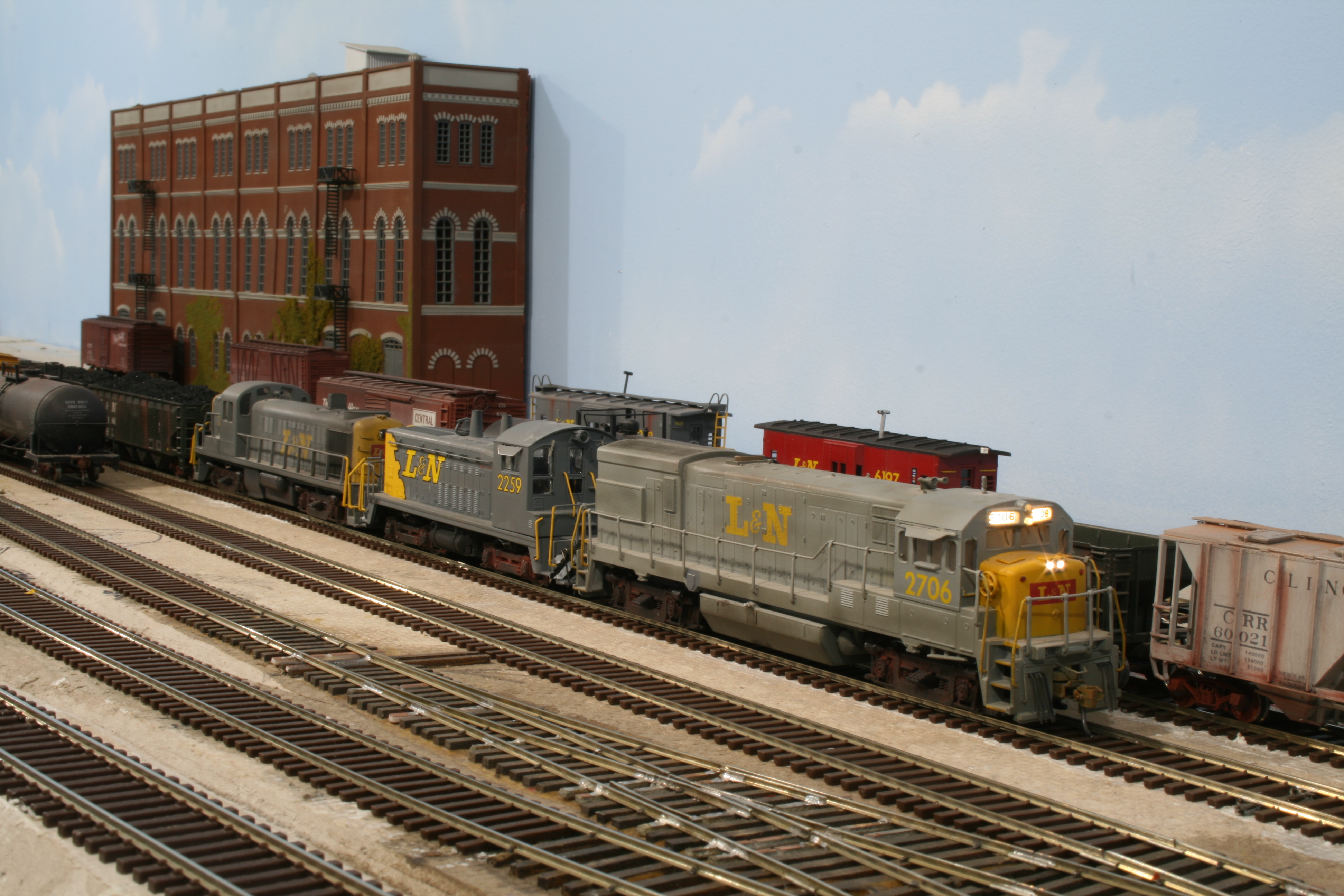Services
Home
Projects
Contact Us
About Us

Decoder installation
If you don’t feel comfortable with installing decoders or just don’t have the time, let us do it for you. We have installed most any brands and most any many types of locos from N scale to G including old brass locos. We have experience with multiple scales and locomotive types. We set up the decoder for you, speed matching, set the correct sounds for the prototype, momentum, braking etc. Special lighting effects are everyday work for us. We provide additional lighting features for a nominal fee. We also have experience with the new sound modules for railroad cars. We specialize in sound.
Speed Matching Multi-Unit Motive Power
Setting up two or more locos to run in a MU set is pretty easy and straightforward. There are three basic methods of creating a consist 1) simple consist where all locos have the same DCC address, 2) command station consist where the operator uses an advanced throttle to MU the locomotives and 3) advanced consisting where CV19 is set on each loco to a short address between 1-173.
Although simple consisting is easy to perform, the disadvantage is that lights, horns and bells come on in trailing units which is not prototypical. In command station consisting you need to use an advanced throttle and if moved to another model railroad must be set up again as the info is back at the old command station. This also makes for a greater load on the memory and processor of the command station. Refer to the manual for your system for the details. With advanced consist you can set CVs 21-22 on following units to squelch lights, horns and bells. The consist info resides in the loco and goes with it to any new model railroad. It also reduces the task for the command station.
However, I have found NCE command station consisting to be easy to perform, realistic and the lead unit number serves as the alias consist address in both directions. In my opinion it is advanced over other systems. For more detailed information on creating MU consist refer to NMRA Magazine Pulse of DCC column April 2017 and August 2017.
When creating an MU set it is important that the locos run well together and at the same speed at all speed steps. There are several methods to speed match locos. I prefer to take speed measurements at various speed steps and adjust the CVs for the speed table. I find the 28 speed step speed table to give more control than the 3 point speed curve. Below is a spread sheet that you can download to help you with the calculations. The first tab will calculate your speed for 1/4 scale mile trials timed with a stop watch and give you an average. The second tab will calculate the speed table CV values given the results of your trials and the target speed. It will also calculate reverse trim after you have taken time trials in reverse. For more information refer to the NMRA Magazine Pulse of DCC column January 2018.
The enclosed spreadsheet provides a vehicle for calculating CV values for locomotive speed matching. To download, select this link Speed Matching Spreadsheet
Speed Matching Document Instructions